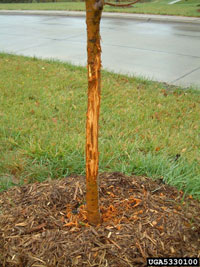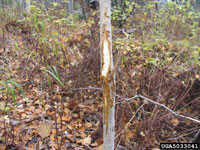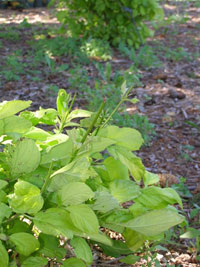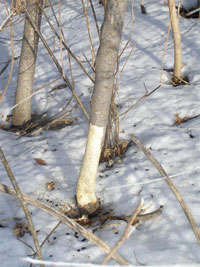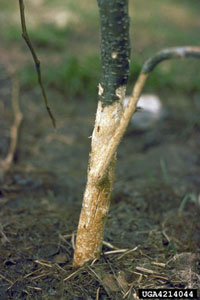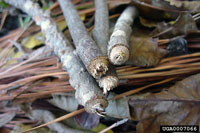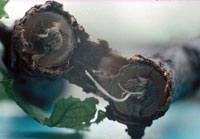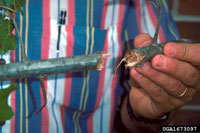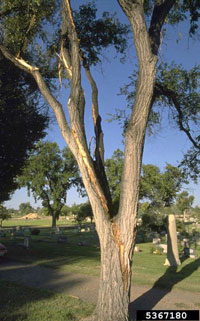Extension > Garden > Diagnose a problem > What's wrong with my plant? > Deciduous Trees > Oak > Bark chewed or removed
Oak > Trunk/Branches > Bark chewed or removed
1 of 5
Deer rubbing on young trees
- Long lines of shredded or peeled off bark along main trunk up to 3 feet off the ground from antler rubbing.
- Feeding occurs from the ground up to 6 feet or slightly higher. Ragged edges, same as above, also if the bark is removed by a deer there will be no sign of teeth marks
- Wood may appear shiny or "polished"
- Leaves and small branches (>1 inch in diameter) cut off with a rough or ragged edge (Not a clean cut!)
- Damage is common only on young trees, old trees have thick bark and wide stem so are not used by deer for antler rubbing
- More information on Problems with deer
2 of 5
Rabbit feeding
- Bark from young trees only is completely removed from the main trunk
- Regular scraping the size of a spoon tip can be seen in the wood
- Damage can occur from ground level to several feet up the trunk depending on the depth of winter snow
- Small twigs are cleanly cut off with a sharp edge, at a 45 degree angle
- Majority of damage occurs in winter and early spring
3 of 5
Vole feeding
- On young trees, bark is completely removed from the main trunk in irregular patches
- Scraping the size of a fork tine can be seen in exposed wood
- Damage occurs during winter from the ground level up to winter snow depth
- Trees and shrubs appear to “die suddenly” during the growing season, especially if they experience any drought stress
4 of 5
Twig girdler
Oncideres cingulata
- Small branches on ground; outer half is smooth while center is rough from where it has broken off
- Dead twigs may be scattered in canopy
- Adult is about 9/16 inch long, grayish brown with scattered yellow spots, with antenna as long as its body
- Damage seen in August and September
- More information on Twig girdler
5 of 5
Lightning injury
- Continuous, sporadic or twisting, vertical stripping from bark torn away on main stem or other large branches
- Cracks or splits in bark from lightning strikes begin in the canopy and extend to the ground line
- Often, large pieces of wood strewn about the hit tree
- Death more common on trees within red oak group; strikes more common when oaks are tallest in area
- More information on Lightning injury



